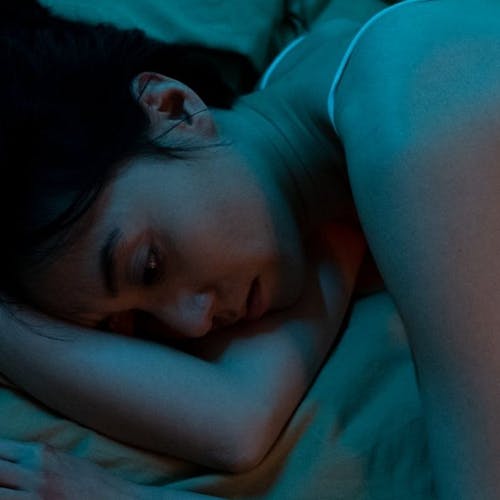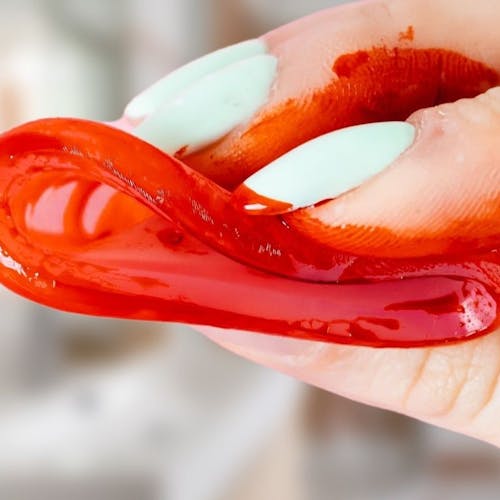This website uses cookies to enhance the user experience. By using Yoppie you are agreeing to our use of cookies.
What You Need To Know About Uterine Fibroids
Written by Yoppie
23 Apr 2020
Firstly, What Are Uterine Fibroids?
Are There Different Types?
Can Fibroids Be Cancerous?
What Causes Uterine Fibroids?
What Are The Symptoms?
When Should You See A Doctor?
Treatment For Uterine Fibroids
Something we haven’t spoken about yet around here is uterine fibroids...so we’re going to dive in right now! Let’s discuss the causes, the symptoms, and the treatment options of this particular women’s health issue.
Firstly, What Are Uterine Fibroids?
Uterine fibroids are noncancerous tumours made of muscle and various tissues that begin to grow around the uterus - either along its walls or inside. Some are tiny and can barely be seen, others can grow as large as 8+ inches in diameter. Imagine anything from the size of a marble to - in extreme cases - a baseball!
It’s hard to say how many women suffer from fibroids, as research suggests it could be anywhere from 20 to 80% of women, which is quite a discrepancy. They’re most commonly found in women in their 40s and 50s, and in a lot of cases, people don’t even realise they have them, as some don’t cause symptoms.
Are There Different Types?
Depending on where they grow in the uterus, fibroids are often grouped into the following three categories:
- Submucosal, which grows into the uterine cavity
- Intramural, which grows within the wall of the uterus
- Subserosal, which grows on the outside of the uterus
There are also some called pedunculated fibroids, which grow on stalks from the surface of the uterus, a bit like mushrooms!
Can Fibroids Be Cancerous?
Fibroid tumours are benign, so although they can be problematic, they are not life-threatening. In rare cases (less than 1 in 1,000) a smooth muscle tumour called a leiomyosarcoma can develop in the uterus, but this type of cancer is not believed to arise from benign fibroids, and your chances of developing this do not increase because you have uterine fibroids.
What Causes Uterine Fibroids?
Frustratingly, nobody knows the cause of fibroids, which makes it difficult for scientists to develop remedies and cures (hello gender gap in medical science!). It is thought that girls who get their period earlier in life are more likely to experience uterine fibroids later, but other than this connection, theories continue to develop as to the causes of this mysterious condition.
What Are The Symptoms?
The good news is, most women with fibroids experience no symptoms - you won’t even know they’re there! In around 25% of cases however, some symptoms do occur. Here’s what you should look out for:
- Abdominal pressure - a feeling of fullness in the pelvic region, or bloating
- Distended stomach area - particularly large fibroids can push out the lower stomach area giving the false appearance of pregnancy
- Changes to your period - mild to severe cramping and pain, heavy bleeding, or blood clots
- Pain during sex
- Lower back pain
- Frequent urination - fibroids can press against the bladder, making you want to use the bathroom more often
Many of the symptoms of fibroids can often be confused with endometriosis, as both can cause pelvic pain, so it’s important to get the right diagnosis.
When Should You See A Doctor?
If you experience any of the above symptoms, you should visit a healthcare professional who can diagnose your situation and discuss treatment options. Certainly, symptoms that make everyday life more difficult - such as issues with urination or severe period cramps - should be looked at to help improve your quality of life.
Treatment For Uterine Fibroids
In a lot of cases, painkillers are used to ease any discomfort from fibroids, however, if your doctor recommends treatment, it will likely be either birth control, hormone therapy, embolization (shrinking the fibroids), or more invasive surgery such as endometrial ablation, myomectomy, and in extreme cases, hysterectomy.
If heavy bleeding or period pain is the primary symptom of fibroids, then standard birth control pills are often used to care for this. When the issue is the continual development of fibroids, Gonadotropin-releasing hormone agonists (GnRHa) are sometimes used to control uterine fibroids by causing the amount of estrogen in the body to drop, which stops fibroids from growing and encourages them to shrink.
What about when a procedure is required? Embolization is nonsurgical, and essentially deprives the fibroids of blood, causing them to shrink. To do this, a small incision is made in the groin area and a solution of tiny plastic or gel particles is injected, blocking the blood supply to the growth. The downside to this procedure is that some women could have an increased risk of miscarriage, so it’s often recommended only to those who do not wish to become pregnant in future.
Surgery for fibroids can be done in three ways; endometrial ablation, myomectomy, and hysterectomy. Endometrial ablation is when the lining of the uterus is destroyed using a method such as freezing or lasering. This outpatient procedure has a quick recovery time, but it can also affect pregnancy later in life.
A myomectomy is an ideal procedure for women who hope to become pregnant in future, as it removes fibroids without affecting healthy womb tissue. As a last resort, a hysterectomy means the removal of all or part of the womb, which makes pregnancy impossible in future.
Do you suffer from symptoms of uterine fibroids? We’d love to hear about your experience so we can help others who suffer from this condition. Head on over to our private Facebook group or drop us a note on Insta @itsyoppie. Don't forget that our personalised period subscription box can get organic tampons, PMS supplements, and much more, delivered easily and regularly through your letterbox. That's one less thing to stress about.
Fact checked by Doctor Brooke Vandermolen.
Section jump
Back to top
Subscribe To Our Newsletter
YOPPIE





© 2026 Yoppie is a registered trademark of Phlo Technologies Ltd.
Yoppie's supplements are not a substitute for a varied diet and healthy lifestyle and are not intended to diagnose, treat, or cure any disease. If you are pregnant, breastfeeding, have a medical condition or are under medical supervision, please consult with your doctor before taking any of our products.






